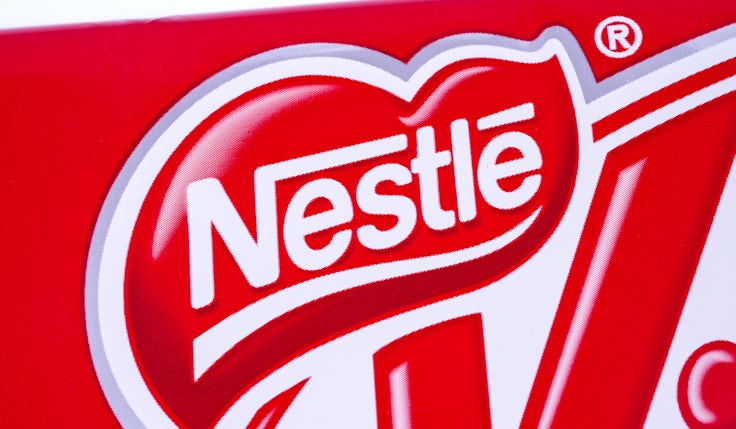Nestlé says increased marketing investment is beginning to show results
Nestlé has forecast a strong Q4 performance on the back of pricing increases and increased marketing activity, but questions around its growth in key areas remain.
 Food and drink giant Nestlé says it is starting to see results from the work it has done to optimise and divest sections of its portfolio, as well as upping investment in marketing for its flagship “billionaire” brands.
Food and drink giant Nestlé says it is starting to see results from the work it has done to optimise and divest sections of its portfolio, as well as upping investment in marketing for its flagship “billionaire” brands.
However, while the business reported organic growth of 7.8% across its geographies and categories for the third quarter, its real internal growth, which it describes as the “sum of volume and mix” declined by 0.6%.
The business is confident the steps it has taken throughout the year will result in real internal growth turning positive in the second half of the year, ad suggests it will return to being the main driver of growth going forward.
“Our diversified portfolio and differentiated offerings helped us deliver strong organic growth in the first nine months of the year,” said Mark Schneider, Nestlé CEO. “Growth was driven by pricing as we continued to navigate historic inflation levels. The recovery of our volume and mix is underway. We are seeing the benefits of our portfolio optimisation initiatives and increasing marketing investments behind our billionaire brands.”
The lion’s share of the reported growth took place in developing regions and in specific categories. By channel, organic growth in retail sales stood at 7.1% while ecommerce sales grew by 12.7% to reach 16.6% of the total group sales.
After its pet care products under the aegis of its Purina brand, many of the brand’s sales were driven by coffee and related products. Coffee saw high single-digit growth, with positive sales developments across its brands and channels. Starbucks products, for example, reported strong growth, as a result of product launches including the launch of ready-to-drink offerings in South-East Asia and Oceania.
Its health science division recorded low single-digit growth, as a result of a sales decline in vitamins, minerals and supplements. Meanwhile, its water-related products also posted low single-digit growth, as a result of “capacity restraints” around the Perrier brand. It blamed slow birth rates for a reduction in demand for, among other things, its infant and baby products.
On the earnings call accompanying the results, Nestlé’s chief financial officer François-Xavier Roger cited investments in marketing as responsible for the optimism. “The step up in real internal growth is being driven by the moderation of new pricing, the benefits of portfolio optimisation and increased marketing investments.”
Nestlé CMO: ‘We never dissociate marketing from sales’
As a result, he argued that the brand plans to invest “about 100 basis points” more in marketing in the second half of the year compared to the same period in 2022. He also says that while promotional activities made up a large share of the company’s marketing activities last year and continued into this year, “2023 is much more about reinvesting in marketing, which is exactly what we are doing as we speak”. The lion’s share of that increased spend is set to land around its “billionaire brands”.
Schneider explained: “It is clear that our market globally is moving from a phase of supply constraint over the last couple of years with less promotional intensity, to a phase today where it’s more about generating demand with an increase in promotional activities.”
Nestlé also announced that some of its flagship brands including KitKat are performing well in both customer awareness and demand. That is despite a roughly 8% increase in prices across the board: Europe saw the highest price increase in general, followed closely by Latin America.
The brand’s CEO Mark Schneider said: “We have increased trade spend materially last year because we sold at a time when we raised our prices by 8% after 15 years of no pricing or limited pricing.” It was noted on the call that Nestlé believes consumers could absorb some of those price increases as a result of still having savings accrued from the Covid-19 pandemic.
Despite that increase, Roger noted that it would still consider price increases on “a selective basis in some categories, where we still see some increase in input cost inflation”.
Schnieder argued that a focus on the company’s own internal growth was a necessary outcome of macroeconomic factors that impact its success in various territories. “There’s no stepping away from the fact that compared to the manufacturing setup that we were building several years ago today’s global demand is not what it used to be.”








Comments